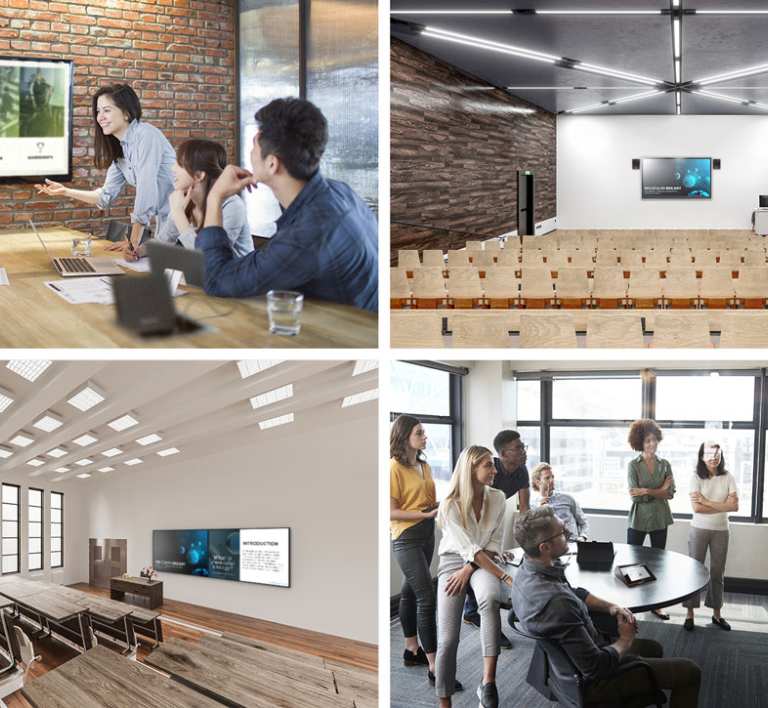


The pandemic accelerated several instructional technology trends that had been slowly gaining traction in recent years; namely, a growing number of remote and hybrid faculty and students and the expansion of web-based conferencing platforms. The rapid evolution of digital connectivity created a need for two distinct learning solutions: “Hybrid” and “Hyflex”.
The takeaway? Hybrid learning – with its combination of remote and in-person students who needed to learn effectively – is here to stay. With Instructional Technology, the most important factor to consider is the ways technology will enhance the communication of the course material from the faculty to the students.
While system requirements are often unique, there are common learning space types for the education market. We created this design guide in partnership with Crestron to help two types of readers:
Download the ultimate guide to classroom design now to help enrich the student and faculty experience!

*Bonus content: check out our recent blog on AV trends in higher education